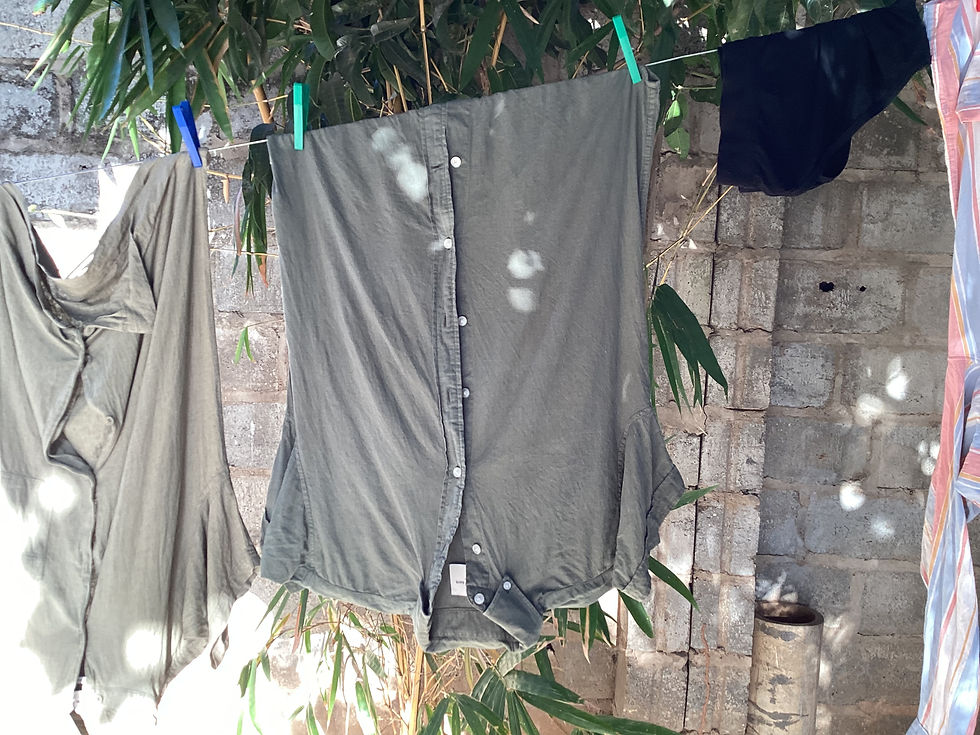ZAMBIA LETTERS, 2
- Ludvig Uhlbors
- 1 juni 2025
- 3 min läsning
Uppdaterat: 28 juni 2025

Departure day. I am facing my bookshelf. “Människans urtid, vårt släktes utveckling under en miljon år” by Josef Wolf, translated by Krister Brood. The book is adorned with dramatic illustrations by Zdenek Burian. On the inside cover it says “Gratulerar på nio årsdagen, Ludde, önskar mamma och pappa 23.10.1982”. It is in a surprisingly good condition, considering how much I read it.
It has now been passed on to my daughter. She received it on the day when she turned four. On pages 67, 102 and 151 there is information on the archaic human species Homo heidelbergensis. They lived at the same time as the first Homo Sapiens and the Neanderthals. Finds of Homo heidelbergensis have been made in Zambia, Tanzania, South Africa and Indonesia. These humans were distinct from us and are considered to represent a lineage between Homo Erectus and anatomically modern humans.
In 1921, miners made the first African find of a Homo Heidelbergensis. It was in the area of Broken Hill near the town of Kabwe in Zambia. Research shows that this particular man probably lived 300,000 years ago and that he died from lead poisoning. Today, Kabwe is one of the most poisoned places in the world, due to its mining industry, and the people who live there often die, as he did, from lead poisoning.
In august 2020 I produced a piece titled Vandring for Engebøfjellet. It was carried out as a protest against the excavation at Engebøfjellet in Norway. Come September this year, I will travel to another residency in Sokndal hosted by Velferden AS. A third controversial mining project is underway in their area and, just like in the case of Engebøfjellet, they plan to use submarine tailings disposal as a way to discard the toxic waste.
“Rannsakningen” by Peter Weiss. It is in a way a travelogue, straight down into the gas ovens in Auschwitz. I need to read it for my project on "Landssvikoppgjøret". Sears Eldredge “Mask improvisation for actor training and performance; the compelling image". It is not mine, I borrowed it from KHiO, but I will bring it with me for Hanna. “Panic Beach” by Sarah Stridsberg, “Berättelserna” by Torgny Lindgren and “Pölsan” to read by the bedside. I should also bring “Greek lessons” by Han Kang. I found it a bit slow on my first read -through, but I have a feeling that I might appreciate it more the second time.
A large backpack for traveling within Zambia, not too big, so that it can be brought on as hand luggage. In addition to that, the blue rolling suitcase I inherited from my grandparents.
MacBook Pro. I managed to get a 13 incher the day before they phased them out completely. If I had waited another day, I would have had to go up in size and consequently in price. iPad. Same here, an older and cheaper model. An iPad doesn´t need to have high capacity. I only use it to solve situations when I should have had a smartphone. Nokia 3210. All the chargers for these machines.
Pencil case. I'm going to use the one that my mother-in-law gave me as a Christmas present. The old one was lost to me on the way home from Stockholm, after my participation in Hanna's performance at Konsthall 16. It was nicely sewn and the leather was starting to get that worked-up quality that comes with time.
Notebook. For two years now I have been using Sakura 29.7. I used to think that smaller notebooks were more convenient but the advantage of a larger notebook is that you can lean it against your hipbone, if it has a hard cover, so that you can write standing without losing too much of your penmanship.
“The face and the mask of the mask of the actor”, Martha Vestin and Grete Sneltved. It is an inconspicuous but partly significant book. Torn and bent due to an accident with a glass of water, but still fully readable. The edition is simple and glue-bound, square in shape. Martha worked in Tanzania for a period and gave a couple of interesting lectures on African theater when I was a student at DI.




Kommentarer